Full name Alumni Athletic Club Ground (none) 1911 1st (champion) | Founded 1898 Established 1898 | |
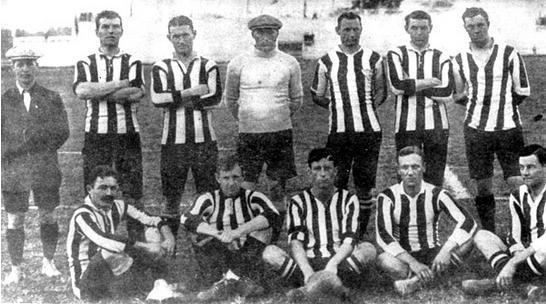 | ||
Dissolved 24 April 1913; 103 years ago (1913-04-24) | ||
Alumni athletic club vs athletic club fenix
Alumni Athletic Club, or simply Alumni, was an Argentine football team active during the first years of the sport in that country. Although officially founded in 1898, the team had been formed in 1893 when a group of students from the Buenos Aires English High School joined with Alexander Watson Hutton (who is considered the "father" of Argentine football) to form a team in order to participate in the championship organized by the Argentine Association Football League (then Asociación del Fútbol Argentino, which had been created that year).
Contents
- Alumni athletic club vs athletic club fenix
- Sokanelas fc vs alumni athletic club
- The Buenos Aires English High School
- First official match
- Creation of an Athletic Club
- The long success
- Dissolution
- Rebirth through rugby
- Players
- Uniform
- Records and facts
- Special awards
- Largest victories
- League
- National cups
- International
- References

The squad was active until 1911 and was disbanded in 1913 due to internal problems. During its run in Primera División, Alumni achieved 10 championships and many national and international cups, becoming one of the most important clubs in the history of Argentine football.
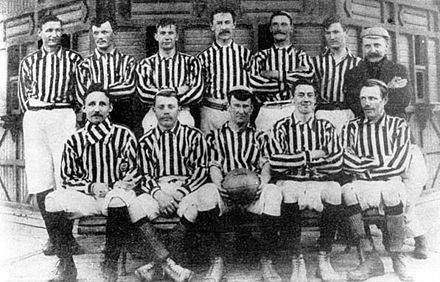
Sokanelas fc vs alumni athletic club
The Buenos Aires English High School
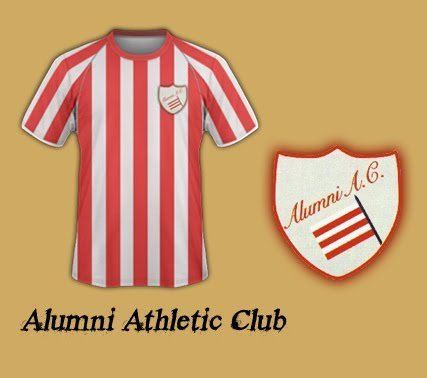
On 25 February 1882, Scottish Professor Alexander Watson Hutton arrived to Buenos Aires. Hutt, considered "the father" of Argentine football, had been hired as Director of Saint Andrew's Scots School but resigned short later due to the institution did not have funds to acquire sports facilities, which were considered by Hutton as an essential component of his teaching methods.
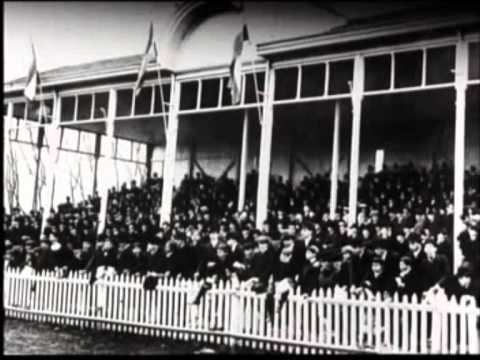
Watson Hutton then created the Buenos Aires English High School (BAEHS) to put in practise his ideas about education, with a special predilection for football. The BAEHS opened on 1 February 1884. To start with the practise of football in Argentina, Waton Hutton brought William Watters from Scotland, to work as a trainer. It was Watters who brought the first footballs from Great Britain to Argentina.
First official match
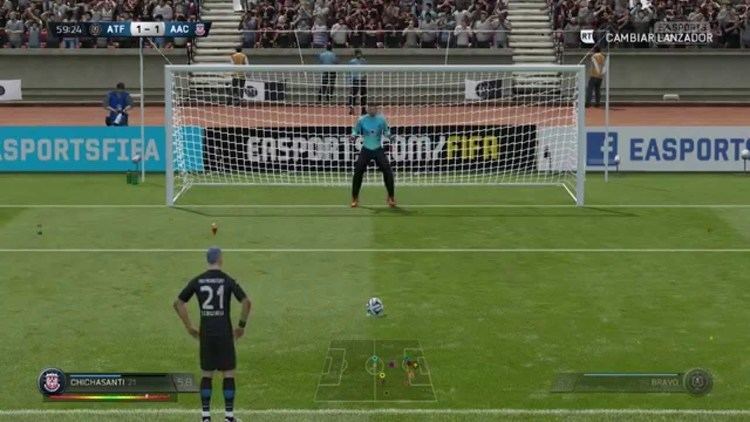
By 1890 football in Buenos Aires had yet to be regulated by any federation although there were many institutions where the game was practised, such as Buenos Aires English High School, St. Andrew's Scots School, Flores Collegiate, Flores English College, Old Caledonians Football Club, Saint John's Football Club, Scotch Club and Buenos Aires Football Club.
In 1891 Alec Lamont, from St. Andrew's, created the Argentine Football Association League. The following teams were registered: St. Andrew's Scots School, Old Caledonians, Buenos Aires and Rosario Railway, Belgrano Football Club (a predecessor of current Belgrano Athletic Club and Buenos Aires Football Club). Nevertheless, this new tournament was badly criticized and was boycotted by most of the clubs. The title was won by St. Andrew's, considered today as the first Argentine Primera División champion ever being recognised even by the Argentine Football Association.
The Argentine Association Football League was dissolved after the 1891 season. As a result, in 1892 no championship was held. On 21 February 1893, Watson Hutton created a new football league with the same name (current Argentine Football Association), with himself as its first president.
The first championship organised by the new Association was the 1893 tournament, with five teams taking part: Lomas AC (which would be the champion), Flores, Quilmes Rowers, Buenos Aires al Rosario Railway and Buenos Aires English High School making its debut.
The BAEHS decided not to take part in the 1894 championship, which caused many of its players to move to other teams such as Lobos AC and Lanús Athletic Club.
Creation of an Athletic Club
The BAEHS team returned to Primera División for the 1895 championship, won by Lomas. The team made a poor campaign, finishing in the last position. The BAESH would not take part in a Primera División tournament until 1900. As they had done in 1894, the students of the school played for other teams during this period.
In 1898 the Minister of Justice and Public Instruction ruled that teaching of physical exercises would be obligatory for all the national schools programs. Furthermore, it was required that each school had to create a sports club formed by their current and former students. As a result, on 3 October 1898, "English High School Athletic Club" was founded. The school bought its first facility in the Coghlan district of Buenos Aires, near the train station, with the purpose of practicing physical activities as it was required
In 1899 the Argentine Football Association created the second division, where the club registered a team. The championship was won by Banfield; English High School A.C. was the runner up. In 1900 the club decided to compete at the Primera División tournaments again, so some of its players returned to the team. Walter Buchanan, Juan McKechnie and Guillermo and Heriberto Jordán came from Lobos A.C. while brothers Tomás, Carlos and Jorge Brown came from Lanús A.C.
The long success
English High School won its first title in 1900, totaling 11 points in 6 games played. It began the long series of titles (10 over 11 seasons played) won by the team during its short existence in Argentine football.
At the end of the season, the Buenos Aires Herald newspaper decided to award a trophy (named "Herald Trophy") to the most popular team of Argentina. To establish this, the Herald made a survey among its readers, who had to send a voucher indicating their favorite team. The survey finished on 31 July 1900, and the English High School AC was awarded as "the most popular team" with 6.942 votes, followed by Quilmes (3.467 votes) and Belgrano Athletic (3.358).
In 1901 the Association forbade football teams to use names of Schools so BAEHS had to register a new name to play at football tournaments. One of club's members and former student Carlos Rowers, came up with the name "Alumni" which was immediately approved, therefore the team changed to "Alumni Athletic Club".
Under its new name, Alumni would win 3 consecutive championships (1901, 1902 and 1903). The 1901 team won all its games, scoring 12 goals and only receiving 1 in 6 matches played. Alumni also won its first international competition, the Tie Cup where teams from Buenos Aires, Rosario and Montevideo took part. The squad defeated Rosario Athletic by 2–1 at the final.
In 1902 Alumni finished unbeaten again, winning 7 of 8 games, scoring 24 goals (an average of 3 per game). The 1903 team won 9 of 10 games, with only one defeat to Belgrano AC by 1–0. Alumni scored 40 goals in the tournament (an average of 4 per game), with large victories over Lomas (3–0, 4–2), Flores AC (6–0, 10–0), Quilmes (4–0, 3–0) and Barracas AC (4–0). The 1903 team also won its second Tie Cup, defeating Rosario Athletic by 3–2.
In 1904 Alumni finished second to Belgrano Athletic, winning only 5 of 10 matches with 2 losses. The next year Alumni won another championship, with the adding of goalkeeper José Buruca Laforia and forward Carlos Lett (who would be the topscorer of the tournament with 12 goals). Alumni won 10 of 12 matches having lost only one and scoring 43 goals. The squad also achieved some highlights such two thrashing victories against Lomas (7–1 and 11–1), and a devastating 14–0 to Reformer AC. Alumni also won the first edition of the domestic Copa de Honor Municipalidad de Buenos Aires that same year, defeating Quilmes 1–0 at the final.
In 1905 Alumni also won its first domestic cup, the Copa de Honor Municipalidad de Buenos Aires, where the team eliminated Estudiantes (BA) and Belgrano AC before defeating Quilmes 1–0 at the final, with a goal scored during extra time.
For the 1906 season, the Argentine tournament changed its format, with all its teams divided into two separated groups. The teams finishing first of each group played a final match in order to proclaim a champion. Alumni and Lomas won their respective zones, playing the final game that was won by Alumni 4–0. During the regular season, Alumni achieved largest victories to Belgrano AC (3–0, 4–0) and Quilmes (4–0). Alumni not only won its 6th. Primera División title, but its second consecutive Copa de Honor Municipalidad de Buenos Aires to Estudiantes (BA) by 3–1, the Tie Cup (demolishing Belgrano AC by 10–1), and the Copa de Honor Cousenier (against Uruguayan team Nacional). To sum up, Alumni won all the tournaments contested that year.
In 1906, an Argentine club defeated a foreign team for the first time. On 24 June, Alumni played a South African combined at Sociedad Sportiva Argentina stadium (where current Campo Argentino de Polo is located). More than 10,000 spectators attended the match, the president of Argentina, José Figueroa Alcorta among them. The game finished 1–0 with a goal scored by Alfredo Brown in the 51st minute.
Alumni won another title the following season, the 1907 championship. The squad finished unbeaten, totalizing 37 points with 17 wins. Alumni achieved a large number of thrashing victories over some rivals, such as San Martín AC (7–0), Reformer (7–0 and 4–0), Quilmes (7–2), Barracas AC and San Isidro (5–0 both), Lomas (4–0 and 5–0), Argentino de Quilmes (5–1 both times), and Belgrano AC (4–0). Due to that outstanding performance on the field, the team reached a record of 76 goals scored in 20 matches (3,8 goals per game). That year Alumni won another domestic cup, the Copa de Competencia Jockey Club defeating Belgrano AC at the final, and its 4th Tie Cup championship, defeating CURCC at Ferro Carril Oeste stadium.
Although Alumni did not win a Primera División title in 1908 (where finished 2nd to Belgrano AC), the team got its third consecutive Copa Jockey Club title, easily defeating Argentino de Quilmes by 5–0 in the final. Internationally, Alumni also won another edition of Tie Cup, easily beating Montevideo Wanderers by 4–0 in Buenos Aires.
Alumni continued its successful campaign winning the Primera División championship in 1909, with 32 points totalized in 18 matches played with only 1 loss. Alumni scored 74 goals (achieving its highest average: 4,11 goals per game), with some large victories over San Isidro (with a devastating 9–0), Belgrano Athletic (6–2), Lomas (8–1 and 4–0), Reformer (7–1) and Estudiantes de Buenos Aires 6–1. Alumni also defeated River Plate (which debuted in Primera División) 3–1 being the first time both teams played against. That was not the only title won by the squad so Alumni won its 3rd consecutive Copa Jockey Club, demolishing Rosarino team Newell's Old Boys by 5–1 in the final match. The team also won by 4th. consecutive time the Tie Cup, beating CURCC 4–0. It would be the last international title won by Alumni, which totalized 7 championships before its dissolution.
Alumni won again a Primera División tournament in 1910. The team got 25 points in 16 matches played, with 42 goals scored (decreasing its goal average to 2,62). The team easily defeated River Plate (3–0 both times), with large wins over Argentino de Quilmes (6–1), Quilmes (5–0) and Gimnasia y Esgrima (BA) (6–0).
The 1911 season was the last time Alumni played officially. From then on, the team would be occasionally reunited for some friendly matches or exhibitions to keep the legend alive. With the 1911 title, Alumni won its second trichampionship after the first success of 1900–1902. That was the season where Alumni finished with the most losses (4) in 16 matches played. Alumni also shared the first position with Porteño so both teams had to play a championship playoff. The game (hosted in Gimnasia y Esgrima de Buenos Aires stadium) was won by Alumni 2–1, thus becoming the new Argentine football champion. Alfredo Brown and Lett were the scorers for Alumni.
During the regular season, Alumni's highlights were some large victories to Quilmes (7–0), River Plate (3–0 and 5–1), Gimnasia y Esgrima (BA) (5–1), Racing Club (5–1, although Racing had defeated them 3–1 in the first round), Estudiantes (BA) (6–0) and San Isidro (5–0).
Alumni finished its last season in official tournaments winning its 10th. league title and becoming the most successful team of Argentina by then with 22 official championships (10 league titles, 5 national cups and 7 international titles). Alumni is also placed 6th. in the all-time ranking of most winning Primera División championships, along with Vélez Sársfield with 10 titles each.
Dissolution
Despite being registered for the 1912 tournament, the team did not play any match. Alumni forfeited its games against Estudiantes (BA), Quilmes and Racing, respectively. After those forfeits, and based on the rules for the competition, the Association disaffiliated Alumni. Many of its players moved to Quilmes, other team with British origins, which finally would obtain the title that year.
There were two main reasons for Alumni's demise: the first cause was the shortage of players due to the fact that Alumni rarely admitted players outside the English High School. The second reason was that Alumni was losing a lot of money (due to the fact that the club often donated its incomes to benefit) and it seemed unlikely that the team could fulfil its matches for 1912 season. The club was dissolved on 24 April 1913. All the members were invited to the assembly, but only 7 attended.
Once the team was disbanded, the assets ($12.322,29) were donated to eight public institutions, the Hospital Británico and the Patronato de la Infancia were among them
Rebirth through rugby
In 1951 the English High School asked its former students for permission to re-establish the name "Alumni" for a rugby team, which would be immediately approved so the "Asociación Alumni" was founded and has remained to date.
Players
The most prominent Alumni's player was Jorge Brown, who was team's captain during two periods: first from 1903 to 1906, and then from 1910 until its dissolution. Five of Jorge's brothers were also players for Alumni: Alfredo, Eliseo, Carlos, Juan and Ernesto, and his cousin Juan Domingo as well.
Another notable player was the goalkeeper José Buruca Laforia, who arrived at the club in 1905 and remained until 1907. Juan McKechnie (1891–94, 1900–04) was another remarkable goalkeeper who gave stirling service to the team.
Alumni was also famous due to its notable strikers, with many of them being the top scorers of the first division championships. Amongst them were Alfredo and Eliseo Brown, Carlos and Ernesto Lett and Arnoldo Watson Hutton.
Many Alumni footballers were usually called up to play for the Argentina national team. Moreover, four of the Brown brothers were repeatedly called together for a match, while five of the Brown cousins took part of Alumni squad for the Brazil tour from 2 June to 14 July 1907.
With a team consisting of many Alumni players, the Argentina national football team won the Copa Lipton four consecutive times: 1906 (8 players from Alumni), 1907 (7), 1908 (5) and 1909 (7). The squad also obtained the Copa Newton in 1906 (with 7 players from Alumni), 1907 (4), 1908 (7) and 1909 (3). Argentina also won the "Copa de Honor Gran Premio de Argentina" in 1909 (7) and 1911 (6).
Uniform
The English High School uniform was based on what students wore at school: a white T-shirt with horizontal red stripes. When the team changed its name in 1901 so the uniform was changed to vertical red stripes. The shorts were white in most of the cases, but Alumni also used a black model and other in navy blue.
Records and facts
Special awards
Largest victories
During its short existence, Alumni achieved a considerable number of large victories over its rivals. Lomas Athletic, Reformer, Belgrano Athletic and San Isidro were some of the teams thrashed by Alumni several times. The list below includes the results by 4 or more goals of difference over its opponents.
